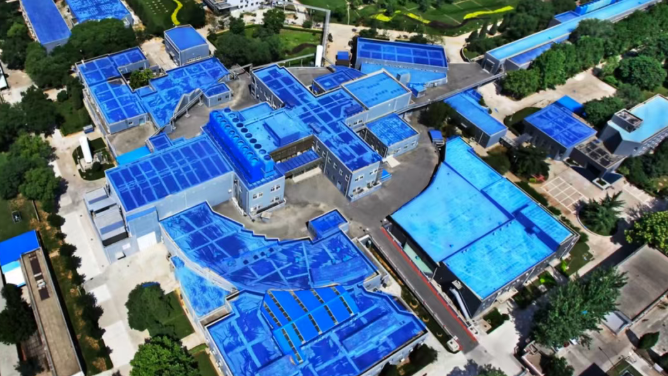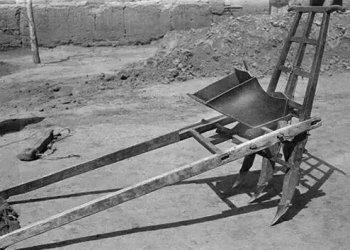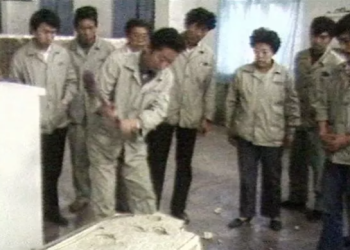“I believe this is the right thing to do!” On October 7, 1984, at the groundbreaking ceremony for the Beijing Positron-Electron Collider, held at the Institute of High Energy Physics, Chinese Academy of Sciences (IHEP) in the western suburbs of Beijing, Comrade Deng Xiaoping made this statement. On that day, he personally placed the first shovel of earth on the cornerstone of the collider. Zhang Wenyu, the director of IHEP at the time, grabbed Deng’s hand, his voice filled with excitement as he said, “My long-held wish has finally come true today!”
Looking back on this historic ceremony, Zhang Chuang, a researcher at IHEP, couldn’t help but feel emotional, his eyes glistening with tears. “That day, many people had waited an entire lifetime.”
Since the 1950s, Chinese scientists had been frustrated by the lack of their own high-energy physics accelerator. For decades, their research had been heavily reliant on data from abroad. They held one enduring dream— to conduct cutting-edge research with their own accelerator. However, in the midst of turbulent political times, this dream was ignited seven times, only to be extinguished seven times. The groundbreaking ceremony represented a moment when that dream was finally realized.
In just four years, Chinese scientists achieved what many thought impossible, building China’s first large-scale scientific device—the Beijing Positron-Electron Collider. This achievement, completed at a pace that surprised even their international peers, produced a continuous stream of scientific breakthroughs. The growing team of talent, the firm establishment of China’s standing in high-energy physics, and the accumulated scientific results all testified to the truth of Deng Xiaoping’s words: this endeavor was not a mistake.
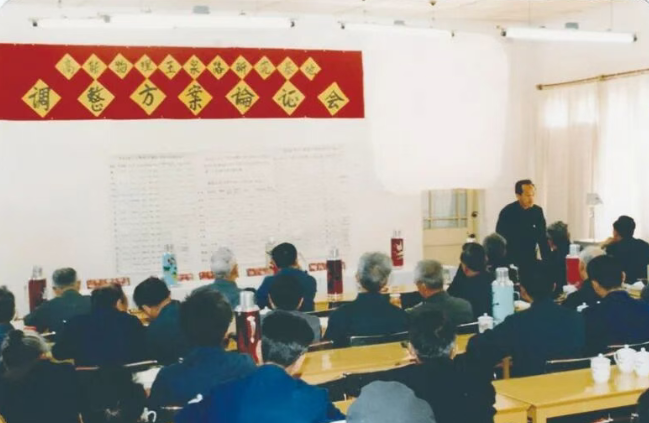
In March 1975, with the early spring still lingering in the air, the weather was neither warm nor cold. Zhang Chuang, who was working at the Beipiao Mining Bureau in Liaoning Province, took the opportunity of a business trip to Beijing to visit his former university professor, Professor Zhang Li, from Tsinghua University. Zhang Chuang had studied particle accelerators at Tsinghua’s Department of Engineering Physics, and after graduating, he was assigned to work in a coal mine. Despite this, he had always maintained close contact with his professor. As he knocked on the door and entered, the two exchanged only a few pleasantries before Professor Zhang Li excitedly shared some news with him: “Premier Zhou has issued a directive—high-energy physics is going to be prioritized!” Professor Zhang’s voice was soft, but to Zhang Chuang, it struck like a thunderclap. It was as though a key had unlocked a long-closed door in his heart.
The story began three years earlier, in August 1972. On the 18th of that month, a letter was sent to Premier Zhou Enlai, signed by 18 prominent scientists including Zhang Wenyu, Zhu Hongyuan, and Xie Jialin. In the letter, they expressed their concerns: “High-energy physics experiments are almost non-existent, and our theoretical research is entirely dependent on experimental data from abroad.” High-energy physics is at the forefront of understanding the microstructure of matter and the laws governing its motion. The essential tools for this frontier research are high-energy accelerators and corresponding detection devices. As early as October 1950, just a year after the founding of the People’s Republic of China, physicists at the Chinese Academy of Sciences proposed the need to build particle accelerators and conduct nuclear physics experiments. In 1953, the world’s first high-energy accelerator was built in the United States, prompting the older generation of Chinese physicists, including Zhao Zhongyao, Zhang Wenyu, and Wang Ganchang, to push for the construction of China’s own high-energy accelerator. However, political upheavals and the fluctuations in the national economy caused this dream to be repeatedly delayed. In their letter, the scientists called for the immediate establishment of a clear policy for developing high-energy physics and for the creation of a dedicated research institute under the leadership of the relevant theoretical research department.
On September 11, 1972, Premier Zhou Enlai responded with a directive: “This matter cannot be delayed any further. The Academy of Sciences must focus on basic science and theoretical research, while also integrating theoretical studies with scientific experiments.” Under the care and support of the Party and national leaders, the Chinese Academy of Sciences established the Institute of High Energy Physics (IHEP). In Zhang Chuang’s mind, this was once an unreachable “palace,” a place that seemed like a distant dream.
Two years later, the Institute of High Energy Physics (IHEP) organized a team of scientists who conducted in-depth research and submitted a report to the State Council titled “Report on the Pre-Research and Construction of High-Energy Accelerators.” The report clearly proposed the construction of a 40 GeV proton synchrotron accelerator within ten years. While lying in a hospital bed, Premier Zhou Enlai reviewed and approved the report. Subsequently, the pre-research project for the high-energy accelerator was given the codename “Project 753.” “The university has recommended graduates from the accelerator specialization to the Institute of High Energy Physics, and you’re on the list,” Professor Zhang Li told Zhang Chuang. To meet the needs of “Project 753,” the Institute began gathering relevant professionals from all over the country. As Zhang Chuang walked out of his professor’s home that day, the weariness of his business trip faded away. Although the tree branches along the road were still bare, a small flower bloomed in his heart—this was the dream that he and his professors had been waiting for.
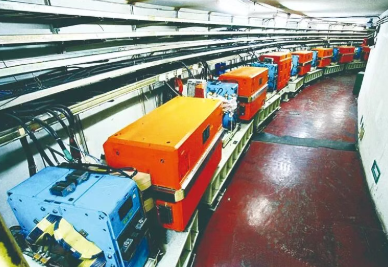
In the fall of 1976, with renewed confidence, the scientists re-examined the “Project 753” proposal and presented a more ambitious “Project 87” plan, which was approved by the state. “Project 87” was divided into three stages: The first step, with an investment of 300 million yuan, was to build a 30 GeV slow-pulse proton ring accelerator; the second step, with an investment of 700 million yuan, was to build a 40 GeV proton ring accelerator by the end of 1987; and the third step was to construct a world-class high-energy accelerator by the end of the 20th century. However, not long after, due to adjustments in the national economy and the tightening of infrastructure projects, the high-energy proton accelerator, considered “non-essential” for the nation, was once again postponed—this was the seventh time the project had been “shelved.” Upon hearing the news, both the older generation of scientists like Zhang Wenyu and the younger generation such as Zhang Chuang were deeply anxious. In May 1980, Zhang Wenyu, Zhao Zhongyao, Zhu Hongyuan, and 39 other high-energy physicists jointly wrote a letter, pleading for the “Project 87” not to be “shelved.” Premier Deng Xiaoping responded with a directive: “This matter is of great importance, it cannot be ‘shelved’.” This directive gave Chinese scientists a renewed opportunity. Although the project was at a standstill, hope was not lost. Everyone began to reconsider an accelerator plan more suited to the country’s conditions, setting their sights on an eighth chance for success.
In 1981, due to the stagnation of “Project 87,” the planned Sino-American High-Energy Physics Conference was unable to take place as scheduled. Upon hearing this news, Chinese-American physicists Yuan Jialiu, Wu Jianxiong, and Li Zhengdao were deeply anxious. They urgently recommended to the Chinese leadership that experts be sent to the United States for discussions. In response, the Institute of High Energy Physics (IHEP) sent Zhu Hongyuan and Xie Jialin to the U.S. to negotiate. They met with Li Zhengdao, Yuan Jialiu, Wu Jianxiong, and other leading American high-energy physicists, including Panofsky, the director of the Stanford Linear Accelerator Center. Together, they discussed the future of high-energy physics in China. In the end, the group unanimously agreed that building a 2×22 GeV electron-positron collider in China was the best option. This new plan, costing only one-third of “Project 87,” would not only open up a rich physics research window but also allow for synchrotron radiation applications, achieving dual-purpose use. However, when Zhu Hongyuan and Xie Jialin brought the proposal back to China, a fierce debate ensued.
The task of developing the collider was fraught with great technical challenges and risks. To make the electron-positron collider work, two extremely fine, high-speed, and thin beams of electrons would need to collide with each other. Precision was critical: they had to “align perfectly” and “collide thoroughly.” Concerns arose from all sides: “Can China manage to build this?” “Even if we succeed in making it, will the performance meet the required standards?” “What if the project is delayed and the physics window closes?” Some even drew an analogy: “Given China’s weak foundation at the time, building the electron-positron collider was like standing on a train platform, hoping to jump onto a speeding express train. If you make the jump, you will surge forward; if you miss, you’ll be crushed.”

In September 1981, the Mathematical and Physical Sciences Division of the Chinese Academy of Sciences (CAS) held a three-day meeting in Fengtai to specifically discuss the project. At the same time, the IHEP organized several internal workshops to find the most feasible path for the country’s high-energy physics future. During this period, CAS sent the division’s then-director Deng Zhaoming, along with Xie Jialin and Zhu Hongyuan, back to the U.S. At the insistence of Li Zhengdao and others, Deng Zhaoming held a phone conversation with CAS leadership, which lasted nearly an hour. After discussions, the leadership confirmed their support for the electron-positron collider proposal. On December 5, 1981, CAS submitted the “Report on the Pre-Research for the Construction of the Beijing Electron-Positron Collider.”
After reviewing the report, Comrade Deng Xiaoping issued a directive: “This project has already progressed to this point, and it cannot be halted. The proposed guidelines are practical and feasible. I approve it for approval without further hesitation.” Subsequently, Gu Yu, who became the leader of the Beijing Electron-Positron Collider project, remarked, “This directive injected new life and vitality into China’s high-energy physics industry, liberating China’s high-energy accelerator program from its crisis.”
At 10:00 AM on October 7, 1984, in the Institute of High Energy Physics (IHEP) on Yuyuan Road in the western suburbs of Beijing, colorful flags fluttered in the air. Leaders of the Party and the state, including Deng Xiaoping, Yang Shangkun, Wan Li, and Fang Yi, along with scientists who had traveled from the United States, gathered at the long-awaited groundbreaking ceremony for the Beijing Electron-Positron Collider. This moment marked the beginning of a significant milestone, and the project was finally underway. In the following years, scientists were determined to “jump” from the station and board the speeding express train of international high-energy physics.
The Beijing Electron-Positron Collider was to be made up of several key components, including injectors, transport lines, storage rings, the Beijing Spectrometer, and synchrotron radiation devices. The project involved over ten thousand pieces of specialized equipment, with complex technologies and extremely high precision requirements, something China had never done before. From the start, a critical question arose: should they fully import the technology, or should they rely on domestic development?
As the head of the project’s leadership team, Gu Yu led his team in a thorough analysis of China’s technological and industrial capabilities. They eventually decided that, apart from the computers and a few other pieces of equipment that China was not yet capable of producing, they would rely mostly on their own resources to design and manufacture the necessary components.

To create an extreme particle collision environment, the technical specifications for the Beijing Electron-Positron Collider’s equipment were pushed to their limits. This involved developing technologies such as high-power microwaves, high-performance magnets, highly stable power sources, and ultra-high vacuum systems. The design requirements for these technologies far exceeded China’s existing capabilities. For example, to accelerate electrons for the collider, a stable microwave electromagnetic field was needed. A component called the “S-band high-power traveling wave tube” served as the “heart” of the microwave magnetic field system.
At the time, the highest level of S-band high-power traveling wave tubes in China could output 15 to 20 megawatts of pulse power, which was insufficient for the collider’s needs. So, IHEP researchers and factories joined forces, absorbing and adapting the production processes from the early 1980s abroad. They modified the production lines, not only increasing the microwave power of the traveling wave tube to 34 megawatts, but also boosting the power of domestic modulators from 50 megawatts to between 100 and 200 megawatts. They also extended the operational life of the equipment from 1,000 hours to 10,000 hours. This breakthrough not only met the collider’s stringent technical requirements for high-power, high-stability, and long-lifespan microwave power sources but also made it possible for several other accelerator projects in China, such as the Hefei Synchrotron Radiation Source, Beijing Free Electron Laser, and Shanghai Free Electron Laser, to use domestically-produced microwave power sources and special waveguide components.
Many similar technological breakthroughs occurred during the development of the collider. To complete the collider, China made significant advancements in areas such as vacuum technology, electromagnets, and high-power, highly stable power supplies. Additionally, in 1987, IHEP built China’s first international computer communication line, becoming a pioneer in the country’s development of the “international information superhighway.”
In October 1988, Ye Minghan, then Director of the Institute of High Energy Physics (IHEP), approached Zheng Zhipeng, who was in charge of the construction, installation, and commissioning of the Beijing Spectrometer. “The Sino-American high-energy talks are about to begin. American experts are in Beijing. If we can achieve electron-positron collisions at this time, it will be a very opportune moment,” Ye said. Zheng immediately gathered his colleagues responsible for the brightness detectors and discussed how to distinguish signals from noise. After several days and nights of continuous adjustments, they gradually figured out the device’s “temperament.”
At 2:00 AM on October 16, 1988, when the Beijing Electron-Positron Collider was in collision mode, the brightness monitor displayed the scattering signals of the electron and positron, and the counts continued to increase over time. When the collider was switched from collision mode to single-beam mode, the signals disappeared. After repeating this process several times, they confirmed: “We’ve made the collision.” In the hall, everyone jumped up with joy, and the exhaustion of the night disappeared in an instant. Ye Minghan, who received the news, arrived at the operation room and the spectrometer hall at dawn to confirm that the electron-positron collision had indeed been achieved. The good news soon spread throughout IHEP and, through the media, across the entire country.
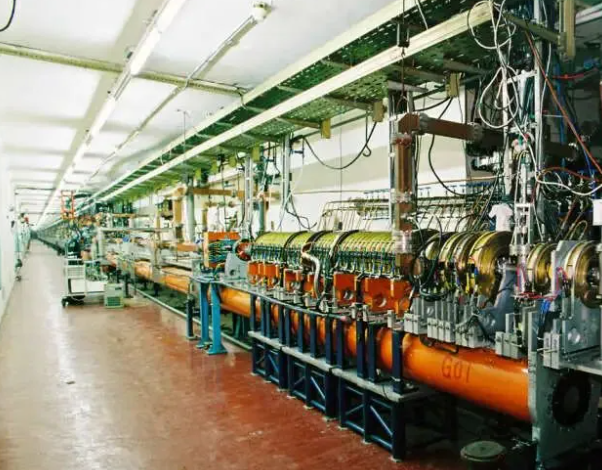
On October 24, 1988, after a refreshing autumn rain in Beijing, Deng Xiaoping visited IHEP once again. On this day, the successful construction of the Beijing Electron-Positron Collider was officially announced! “In the past, today, and in the future, China must develop its own high technology and take a place in the world’s high-tech field,” Deng Xiaoping said at the completion ceremony. In just four years, Chinese scientists had truly “boarded” the speeding train of international high-energy physics. The success of the collider became an important milestone in China’s scientific development. Nobel laureate in physics, Richter, praised the achievement, and thus, the era of China’s big science programs officially began.
During the course of research, a new generation of young high-energy physicists also emerged. A steady stream of talented PhD students and postdoctoral researchers has been continuously sent to major research institutions and universities across the country, becoming the fresh blood for the development of high-energy physics in China. Wang Yifang, the current director of the Institute of High Energy Physics (IHEP), remarked: “Looking back today, building the Beijing Electron-Positron Collider was the best decision at the time. It allowed China to secure a place in the international high-energy physics community, cultivated a team with international standards, and also contributed to the construction of other large scientific facilities in China.” To this day, the Beijing Electron-Positron Collider continues to undergo improvements. “We are currently upgrading the accelerator to increase its luminosity by three times. After the upgrade, the collider is expected to continue running until around 2030,” said Wang Yifang.
In the eyes of many who have witnessed the journey, the construction of the Beijing Electron-Positron Collider is the result of generations of scientists’ continuous efforts, the collective achievements of many organizations across the nation, and the benefits of international collaboration after the opening-up and reform period. Looking back, the beginning of high-energy physics in China was difficult and full of twists and turns, but the scientists never lost hope and passion. The setbacks and triumphs of the past have shaped the boldness and character of China’s high-energy physicists. They have also accumulated a precious experience for future generations—remaining steadfast in times of adversity and striving forward with hope.
